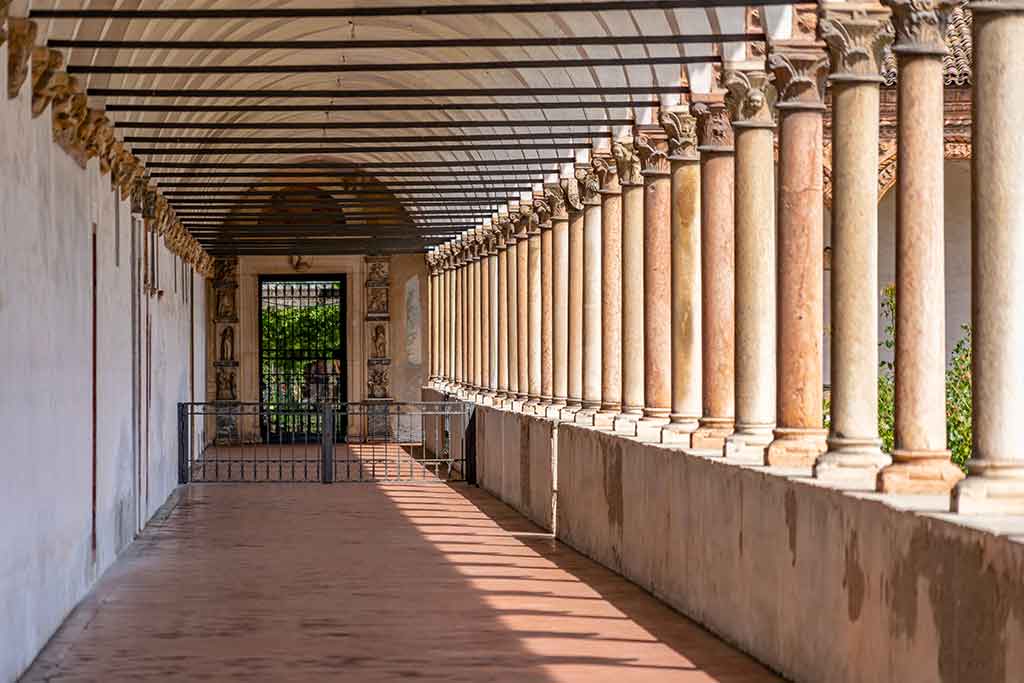
Cloister of the Certosa di Pavia
The city is one of the stages of the ancient Via Francigena, the road that from Canterbury to Rome was traveled by thousands of pilgrims in the Middle Ages. The founding of the city dates back to Roman times, it was later the capital of the Lombard kingdom but in the Middle Ages it lost political power and was annexed to the Duchy of Milan.
Despite the loss of power and autonomy, it was in Pavia that one of the oldest universities in Italy was born. Given its origins, Roman first and then medieval, Pavia was a fortified city. Today its ramparts have been transformed into ring road avenues.
It is precisely from one of these avenues that I enter the city and I am immediately kidnapped by its churches: Romanesque such as San Michele Maggiore or San Pietro in Ciel d'Oro, Gothic like Santa Maria del Carmine and from the very rare example of Lombard art represented by the crypt of the
church of Sant'Eusebio. But this is only a very small part of the city's numerous religious buildings.
A separate quote deserves the
Charterhouse of Pavia, which began at the end of 1300, the complex consists of the monastery, the church, cloisters and numerous beautiful gardens.
The non-religious architecture is equally rich enough to think of the
Palazzo Visconteo, with its beautiful park, the Palazzo Mezzabarba, seat of the town hall, the headquarters of the university, with the splendid entrance to the Aula Magna.
Walking through Pavia, I breathed in the Middle Ages as it happened to me only in very few other places. I recommend it as a stop to anyone who wants to try to retrace the ancient
Via Francigena.
written by Marilyn Fitzpatrick - Last update: 10/09/2021
This guide has been translated automatically through a third party service. Visititaly offers these automatic translations to help site visitors, however the automatic translations may contain inaccuracies, errors or inaccuracies. You can contact us to report inaccuracies or errors and we will check the translation.